- Home
- J. R. R. Tolkien
The Silmarillion Page 2
The Silmarillion Read online
Page 2
The cycles begin with a cosmogonical myth: the Music of the Ainur. God and the Valar (or powers: Englished as gods) are revealed. These latter are as we should say angelic powers, whose function is to exercise delegated authority in their spheres (of rule and government, not creation, making or re-making). They are ‘divine’, that is, were originally ‘outside’ and existed ‘before’ the making of the world. Their power and wisdom is derived from their Knowledge of the cosmogonical drama, which they perceived first as a drama (that is as in a fashion we perceive a story composed by someone else), and later as a ‘reality’. On the side of mere narrative device, this is, of course, meant to provide beings of the same order of beauty, power, and majesty as the ‘gods’ of higher mythology, which can yet be accepted – well, shall we say baldly, by a mind that believes in the Blessed Trinity.
It moves then swiftly to the History of the Elves, or the Silmarillion proper; to the world as we perceive it, but of course transfigured in a still half-mythical mode: that is it deals with rational incarnate creatures of more or less comparable stature with our own. The Knowledge of the Creation Drama was incomplete: incomplete in each individual ‘god’, and incomplete if all the knowledge of the pantheon were pooled. For (partly to redress the evil of the rebel Melkor, partly for the completion of all in an ultimate finesse of detail) the Creator had not revealed all. The making, and nature, of the Children of God, were the two chief secrets. All that the gods knew was that they would come, at appointed times. The Children of God are thus primevally related and akin, and primevally different. Since also they are something wholly ‘other’ to the gods, in the making of which the gods played no part, they are the object of the special desire and love of the gods. These are the First-born, the Elves; and the Followers Men. The doom of the Elves is to be immortal, to love the beauty of the world, to bring it to full flower with their gifts of delicacy and perfection, to last while it lasts, never leaving it even when ‘slain’, but returning – and yet, when the Followers come, to teach them, and make way for them, to ‘fade’ as the Followers grow and absorb the life from which both proceed. The Doom (or the Gift) of Men is mortality, freedom from the circles of the world. Since the point of view of the whole cycle is the Elvish, mortality is not explained mythically: it is a mystery of God of which no more is known than that ‘what God has purposed for Men is hidden’: a grief and an envy to the immortal Elves.
As I say, the legendary Silmarillion is peculiar, and differs from all similar things that I know in not being anthropocentric. Its centre of view and interest is not Men but ‘Elves’. Men come in inevitably: after all the author is a man, and if he has an audience they will be Men and Men must come in to our tales, as such, and not merely transfigured or partially represented as Elves, Dwarfs, Hobbits, etc. But they remain peripheral – late comers, and however growingly important, not principals.
In the cosmogony there is a fall: a fall of Angels we should say. Though quite different in form, of course, to that of Christian myth. These tales are ‘new’, they are not directly derived from other myths and legends, but they must inevitably contain a large measure of ancient wide-spread motives or elements. After all, I believe that legends and myths are largely made of ‘truth’, and indeed present aspects of it that can only be received in this mode; and long ago certain truths and modes of this kind were discovered and must always reappear. There cannot be any ‘story’ without a fall – all stories are ultimately about the fall – at least not for human minds as we know them and have them.
So, proceeding, the Elves have a fall, before their ‘history’ can become storial. (The first fall of Man, for reasons explained, nowhere appears – Men do not come on the stage until all that is long past, and there is only a rumour that for a while they fell under the domination of the Enemy and that some repented.) The main body of the tale, the Silmarillion proper, is about the fall of the most gifted kindred of the Elves, their exile from Valinor (a kind of Paradise, the home of the Gods) in the furthest West, their re-entry into Middle-earth, the land of their birth but long under the rule of the Enemy, and their strife with him, the power of Evil still visibly incarnate. It receives its name because the events are all threaded upon the fate and significance of the Silmarilli (‘radiance of pure light’) or Primeval Jewels. By the making of gems the sub-creative function of the Elves is chiefly symbolized, but the Silmarilli were more than just beautiful things as such. There was Light. There was the Light of Valinor made visible in the Two Trees of Silver and Gold.[4] These were slain by the Enemy out of malice, and Valinor was darkened, though from them, ere they died utterly, were derived the lights of Sun and Moon. (A marked difference here between these legends and most others is that the Sun is not a divine symbol, but a second-best thing, and the ‘light of the Sun’ (the world under the sun) become terms for a fallen world, and a dislocated imperfect vision).
But the chief artificer of the Elves (Fëanor) had imprisoned the Light of Valinor in the three supreme jewels, the Silmarilli, before the Trees were sullied or slain. This Light thus lived thereafter only in these gems. The fall of the Elves comes about through the possessive attitude of Fëanor and his seven sons to these gems. They are captured by the Enemy, set in his Iron Crown, and guarded in his impenetrable stronghold. The sons of Fëanor take a terrible and blasphemous oath of enmity and vengeance against all or any, even of the gods, who dares to claim any part or right in the Silmarilli. They pervert the greater part of their kindred, who rebel against the gods, and depart from paradise, and go to make hopeless war upon the Enemy. The first fruit of their fall is war in Paradise, the slaying of Elves by Elves, and this and their evil oath dogs all their later heroism, generating treacheries and undoing all victories. The Silmarillion is the history of the War of the Exiled Elves against the Enemy, which all takes place in the North-west of the world (Middle-earth). Several tales of victory and tragedy are caught up in it; but it ends with catastrophe, and the passing of the Ancient World, the world of the long First Age. The jewels are recovered (by the final intervention of the gods) only to be lost for ever to the Elves, one in the sea, one in the deeps of earth, and one as a star of heaven. This legendarium ends with a vision of the end of the world, its breaking and remaking, and the recovery of the Silmarilli and the ‘light before the Sun’ – after a final battle which owes, I suppose, more to the Norse vision of Ragnarök than to anything else, though it is not much like it.
As the stories become less mythical, and more like stories and romances, Men are interwoven. For the most part these are ‘good Men’ – families and their chiefs who rejecting the service of Evil, and hearing rumours of the Gods of the West and the High Elves, flee westward and come into contact with the Exiled Elves in the midst of their war. The Men who appear are mainly those of the Three Houses of the Fathers of Men, whose chieftains become allies of the Elflords. The contact of Men and Elves already fore-shadows the history of the later Ages, and a recurrent theme is the idea that in Men (as they now are) there is a strand of ‘blood’ and inheritance, derived from the Elves, and that the art and poetry of Men is largely dependent on it, or modified by it.[5] There are thus two marriages of mortal and elf – both later coalescing in the kindred of Eärendil, represented by Elrond the Half-elven who appears in all the stories, even The Hobbit. The chief of the stories of The Silmarillion, and the one most fully treated is the Story of Beren and Lúthien the Elfmaiden. Here we meet, among other things, the first example of the motive (to become dominant in Hobbits) that the great policies of world history, ‘the wheels of the world’, are often turned not by the Lords and Governors, even gods, but by the seemingly unknown and weak – owing to the secret life in creation, and the part unknowable to all wisdom but One, that resides in the intrusions of the Children of God into the Drama. It is Beren the outlawed mortal who succeeds (with the help of Lúthien, a mere maiden even if an elf of royalty) where all the armies and warriors have failed: he penetrates the stronghold of the Enemy and wrests on
e of the Silmarilli from the Iron Crown. Thus he wins the hand of Lúthien and the first marriage of mortal and immortal is achieved.
As such the story is (I think a beautiful and powerful) heroic-fairy-romance, receivable in itself with only a very general vague knowledge of the background. But it is also a fundamental link in the cycle, deprived of its full significance out of its place therein. For the capture of the Silmaril, a supreme victory, leads to disaster. The oath of the sons of Fëanor becomes operative, and lust for the Silmaril brings all the kingdoms of the Elves to ruin.
There are other stories almost equally full in treatment, and equally independent and yet linked to the general history. There is the Children of Húrin, the tragic tale of Túrin Turambar and his sister Níniel – of which Túrin is the hero: a figure that might be said (by people who like that sort of thing, though it is not very useful) to be derived from elements in Sigurd the Volsung, Oedipus, and the Finnish Kullervo. There is the Fall of Gondolin: the chief Elvish stronghold. And the tale, or tales, of Eärendil the Wanderer. He is important as the person who brings the Silmarillion to its end, and as providing in his offspring the main links to and persons in the tales of later Ages. His function, as a representative of both Kindreds, Elves and Men, is to find a sea-passage back to the Land of the Gods, and as ambassador persuade them to take thought again for the Exiles, to pity them, and rescue them from the Enemy. His wife Elwing descends from Lúthien and still possesses the Silmaril. But the curse still works, and Eärendil’s home is destroyed by the sons of Fëanor. But this provides the solution: Elwing casting herself into the Sea to save the Jewel comes to Eärendil, and with the power of the great Gem they pass at last to Valinor, and accomplish their errand – at the cost of never being allowed to return or dwell again with Elves or Men. The gods then move again, and great power comes out of the West, and the Stronghold of the Enemy is destroyed; and he himself [is] thrust out of the World into the Void, never to reappear there in incarnate form again. The remaining two Silmarils are regained from the Iron Crown – only to be lost. The last two sons of Fëanor, compelled by their oath, steal them, and are destroyed by them, casting themselves into the sea, and the pits of the earth. The ship of Eärendil adorned with the last Silmaril is set in heaven as the brightest star. So ends The Silmarillion and the tales of the First Age.
The next cycle deals (or would deal) with the Second Age. But it is on Earth a dark age, and not very much of its history is (or need be) told. In the great battles against the First Enemy the lands were broken and ruined, and the West of Middle-earth became desolate. We learn that the Exiled Elves were, if not commanded, at least sternly counselled to return into the West, and there be at peace. They were not to dwell permanently in Valinor again, but in the Lonely Isle of Eressëa within sight of the Blessed Realm. The Men of the Three Houses were rewarded for their valour and faithful alliance, by being allowed to dwell ‘westernmost of all mortals’, in the great ‘Atlantis’ isle of Númenóre. The doom or gift of God, of mortality, the gods of course cannot abrogate, but the Númenóreans have a great span of life. They set sail and leave Middle-earth, and establish a great kingdom of mariners just within furthest sight of Eressëa (but not of Valinor). Most of the High Elves depart also back into the West. Not all. Some men akin to the Númenóreans remain in the land not far from the shores of the Sea. Some of the Exiles will not return, or delay their return (for the way west is ever open to the immortals and in the Grey Havens ships are ever ready to sail away for ever). Also the Orcs (goblins) and other monsters bred by the First Enemy are not wholly destroyed. And there is Sauron. In the Silmarillion and Tales of the First Age Sauron was a being of Valinor perverted to the service of the Enemy and becoming his chief captain and servant. He repents in fear when the First Enemy is utterly defeated, but in the end does not do as was commanded, return to the judgement of the gods. He lingers in Middle-earth. Very slowly, beginning with fair motives: the reorganising and rehabilitation of the ruin of Middle-earth, ‘neglected by the gods’, he becomes a re-incarnation of Evil, and a thing lusting for Complete Power – and so consumed ever more fiercely with hate (especially of gods and Elves). All through the twilight of the Second Age the Shadow is growing in the East of Middle-earth, spreading its sway more and more over Men – who multiply as the Elves begin to fade. The three main themes are thus The Delaying Elves that lingered in Middle-earth; Sauron’s growth to a new Dark Lord, master and god of Men; and Númenor-Atlantis. They are dealt with annalistically, and in two Tales or Accounts, The Rings of Power and the Downfall of Númenor. Both are the essential background to The Hobbit and its sequel.
In the first we see a sort of second fall or at least ‘error’ of the Elves. There was nothing wrong essentially in their lingering against counsel, still sadly with[6] the mortal lands of their old heroic deeds. But they wanted to have their cake without eating it. They wanted the peace and bliss and perfect memory of ‘The West’, and yet to remain on the ordinary earth where their prestige as the highest people, above wild Elves, dwarves, and Men, was greater than at the bottom of the hierarchy of Valinor. They thus became obsessed with ‘fading’, the mode in which the changes of time (the law of the world under the sun) was perceived by them. They became sad, and their art (shall we say) antiquarian, and their efforts all really a kind of embalming – even though they also retained the old motive of their kind, the adornment of earth, and the healing of its hurts. We hear of a lingering kingdom, in the extreme North-west more or less in what was left in the old lands of The Silmarillion, under Gilgalad; and of other settlements, such as Imladris (Rivendell) near Elrond; and a great one at Eregion at the Western feet of the Misty Mountains, adjacent to the Mines of Moria, the major realm of the Dwarves in the Second Age. There arose a friendship between the usually hostile folk (of Elves and Dwarves) for the first and only time, and smithcraft reached its highest development. But many of the Elves listened to Sauron. He was still fair in that early time, and his motives and those of the Elves seemed to go partly together: the healing of the desolate lands. Sauron found their weak point in suggesting that, helping one another, they could make Western Middle-earth as beautiful as Valinor. It was really a veiled attack on the gods, an incitement to try and make a separate independent paradise. Gilgalad repulsed all such overtures, as also did Elrond. But at Eregion great work began – and the Elves came their nearest to falling to ‘magic’ and machinery. With the aid of Sauron’s lore they made Rings of Power (‘power’ is an ominous and sinister word in all these tales, except as applied to the gods).
The chief power (of all the rings alike) was the prevention or slowing of decay (i.e. ‘change’ viewed as a regrettable thing), the preservation of what is desired or loved, or its semblance – this is more or less an Elvish motive. But also they enhanced the natural powers of a possessor – thus approaching ‘magic’, a motive easily corruptible into evil, a lust for domination. And finally they had other powers, more directly derived from Sauron (‘the Necromancer’: so he is called as he casts a fleeting shadow and presage on the pages of The Hobbit): such as rendering invisible the material body, and making things of the invisible world visible.
The Elves of Eregion made Three supremely beautiful and powerful rings, almost solely of their own imagination, and directed to the preservation of beauty: they did not confer invisibility. But secretly in the subterranean Fire, in his own Black Land, Sauron made One Ring, the Ruling Ring that contained the powers of all the others, and controlled them, so that its wearer could see the thoughts of all those that used the lesser rings, could govern all that they did, and in the end could utterly enslave them. He reckoned, however, without the wisdom and subtle perceptions of the Elves. The moment he assumed the One, they were aware of it, and of his secret purpose, and were afraid. They hid the Three Rings, so that not even Sauron ever discovered where they were and they remained unsullied. The others they tried to destroy.
In the resulting war between Sauron and the Elves Middle-e
arth, especially in the west, was further ruined. Eregion was captured and destroyed, and Sauron seized many Rings of Power. These he gave, for their ultimate corruption and enslavement, to those who would accept them (out of ambition or greed). Hence the ‘ancient rhyme’ that appears as the leit-motif of The Lord of the Rings,
Three Rings for the Elven-Kings under the sky,
Seven for the Dwarf-lords in their halls of stone,
Nine for Mortal Men doomed to die,
One for the Dark Lord on his dark throne
In the Land of Mordor where the shadows lie.
Sauron became thus almost supreme in Middle-earth. The Elves held out in secret places (not yet revealed). The last Elf-Kingdom of Gilgalad is maintained precariously on the extreme west-shores, where are the havens of the Ships. Elrond the Half-elven, son of Eärendil, maintains a kind of enchanted sanctuary at Imladris (in English Rivendell) on the extreme eastern margin of the western lands.[7] But Sauron dominates all the multiplying hordes of Men that have had no contact with the Elves and so indirectly with the true and unfallen Valar and gods. He rules a growing empire from the great dark tower of Barad-dûr in Mordor, near to the Mountain of Fire, wielding the One Ring.
But to achieve this he had been obliged to let a great part of his own inherent power (a frequent and very significant motive in myth and fairy-story) pass into the One Ring. While he wore it, his power on earth was actually enhanced. But even if he did not wear it, that power existed and was in ‘rapport’ with himself: he was not ‘diminished’. Unless some other seized it and became possessed of it. If that happened, the new possessor could (if sufficiently strong and heroic by nature) challenge Sauron, become master of all that he had learned or done since the making of the One Ring, and so overthrow him and usurp his place. This was the essential weakness he had introduced into his situation in his effort (largely unsuccessful) to enslave the Elves, and in his desire to establish a control over the minds and wills of his servants. There was another weakness: if the One Ring was actually unmade, annihilated, then its power would be dissolved, Sauron’s own being would be diminished to vanishing point, and he would be reduced to a shadow, a mere memory of malicious will. But that he never contemplated nor feared. The Ring was unbreakable by any smithcraft less than his own. It was indissoluble in any fire, save the undying subterranean fire where it was made – and that was unapproachable, in Mordor. Also so great was the Ring’s power of lust, that anyone who used it became mastered by it; it was beyond the strength of any will (even his own) to injure it, cast it away, or neglect it. So he thought. It was in any case on his finger.

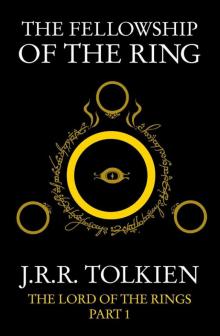 The Fellowship of the Ring
The Fellowship of the Ring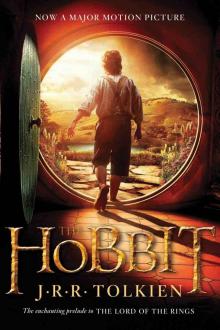 The Hobbit
The Hobbit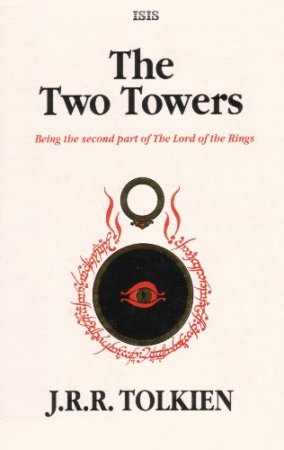 The Two Towers
The Two Towers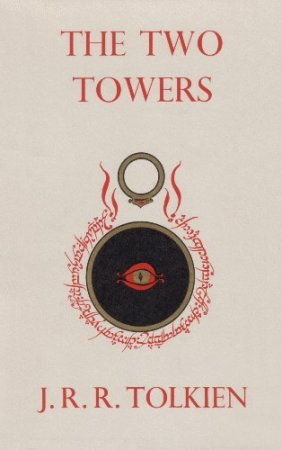 The Return of the King
The Return of the King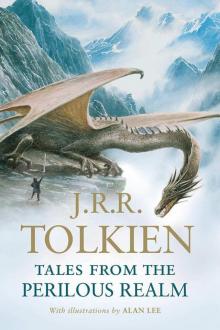 Tales From the Perilous Realm
Tales From the Perilous Realm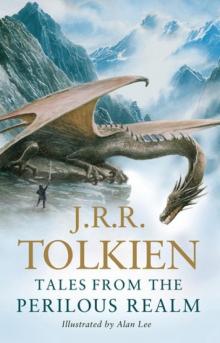 Leaf by Niggle
Leaf by Niggle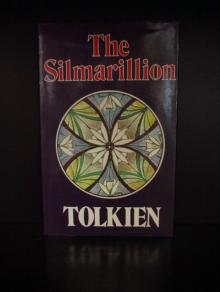 The Silmarillon
The Silmarillon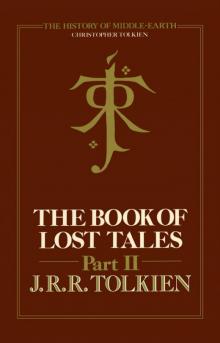 The Book of Lost Tales, Part Two
The Book of Lost Tales, Part Two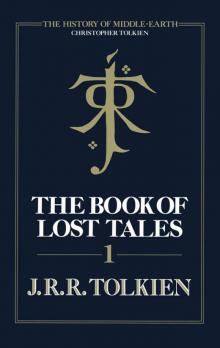 The Book of Lost Tales, Part One
The Book of Lost Tales, Part One The Book of Lost Tales 2
The Book of Lost Tales 2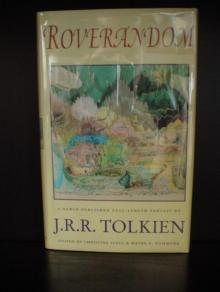 Roverandom
Roverandom Smith of Wootton Major
Smith of Wootton Major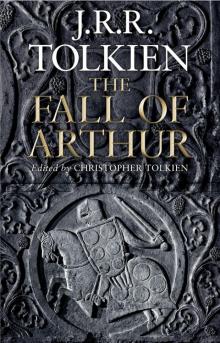 The Fall of Arthur
The Fall of Arthur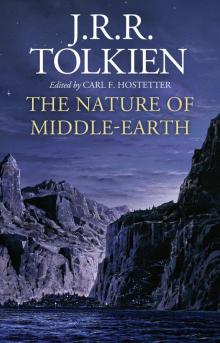 The Nature of Middle-earth
The Nature of Middle-earth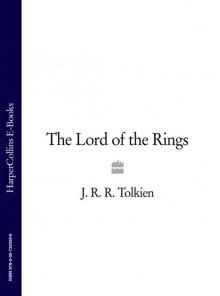 The Lord of the Rings: The Fellowship of the Ring, The Two Towers, The Return of the King
The Lord of the Rings: The Fellowship of the Ring, The Two Towers, The Return of the King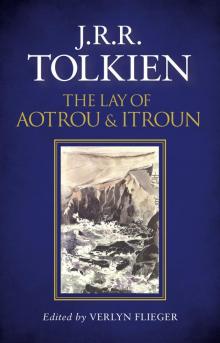 The Lay of Aotrou and Itroun
The Lay of Aotrou and Itroun lord_rings.qxd
lord_rings.qxd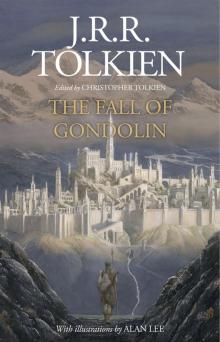 The Fall of Gondolin
The Fall of Gondolin The Book of Lost Tales, Part 1
The Book of Lost Tales, Part 1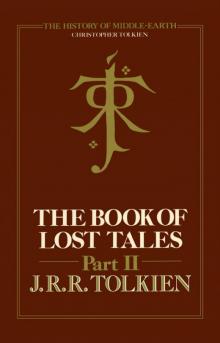 The Book of Lost Tales, Part 2
The Book of Lost Tales, Part 2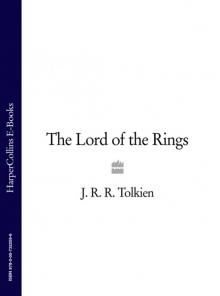 The Lord of the Rings
The Lord of the Rings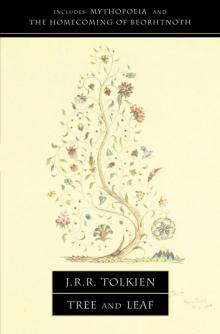 Tree and Leaf
Tree and Leaf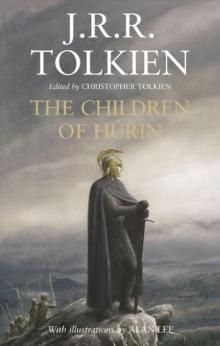 The Children of Húrin
The Children of Húrin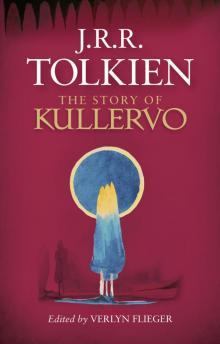 The Story of Kullervo
The Story of Kullervo Letters From Father Christmas
Letters From Father Christmas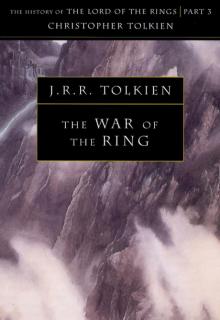 The History of Middle Earth: Volume 8 - The War of the Ring
The History of Middle Earth: Volume 8 - The War of the Ring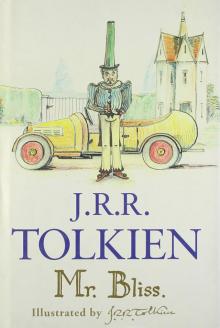 Mr. Bliss
Mr. Bliss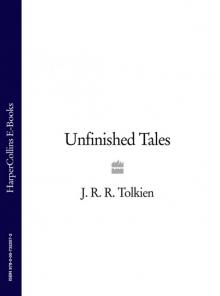 Unfinished Tales
Unfinished Tales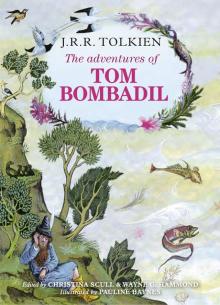 The Adventures of Tom Bombadil
The Adventures of Tom Bombadil Beowulf: A Translation and Commentary, together with Sellic Spell
Beowulf: A Translation and Commentary, together with Sellic Spell The Silmarillion
The Silmarillion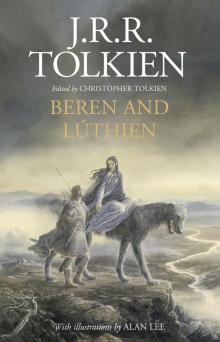 Beren and Lúthien
Beren and Lúthien